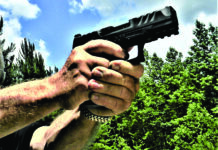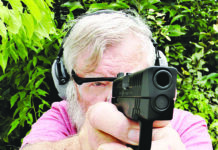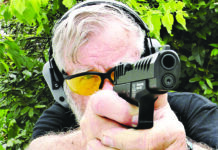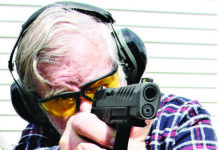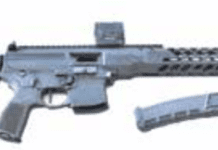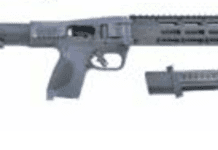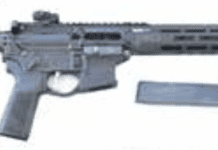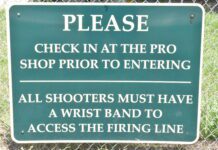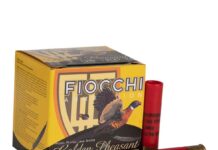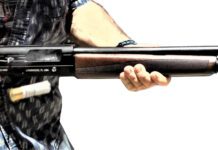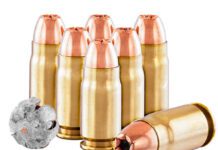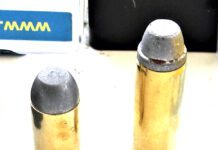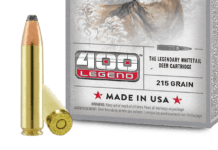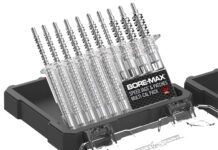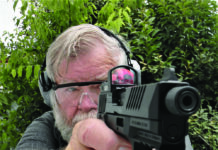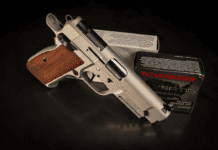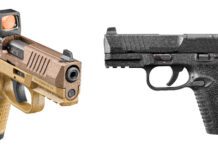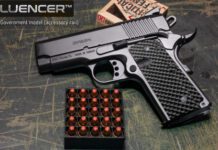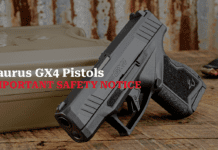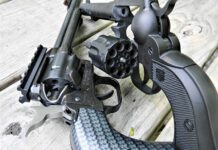Guns and Hummers in Missouri
NC Federal Grand Jury Indicts 9 in Firearms Thefts Ring
Do Travel Writers Who Hate the 2nd Amendment Disturb You? Then Consider Skipping ‘Frommer’...
Gun Tests Test Inventory Available for Purchase: August 24, 2009
SuperMag Battle: Remington NitroMag vs. Benelli SuperNova
SuperMag Battle: Remington NitroMag vs. Benelli SuperNova
Semiautomatic Shotguns for Self-Defense: We Like Utility
When it comes to defending the home, the shotgun is and probably always will be a popular choice. The favorite design for this purpose has long been the pump-action shotgun. Simplicity, low cost, and reliability are their hallmarks. Cycling a pump shotgun relies directly upon the operator, while semiautos load themselves. Perhaps this is why the pump is more widely trusted. In this test we will find out if two semiautomatic shotguns can earn the same high level of confidence as the shuckers have earned. Furthermore, we'll pit a base-model autoloader against a fully dressed tactical model to see just what upgrades help or hinder. Our test shotguns were the $458 CZ-USA No. 06029 712 Utility 12 gauge and the $700 Mossberg Special Purpose 930 Tactical No. 85360. Both shotguns were constructed with black synthetic stocks and black aluminum receivers. The CZ shotgun was a basic model, as its name would imply. The Mossberg was outfitted with several upgrades from the tactical aftermarket.
To test our shotguns we did not take them to the skeet range. Nor did we take them hunting. Here is what we were looking for: First, we wanted to find out the size and the density of pattern we could deliver shooting nine-pellet 23/4-inch 00 buckshot. Our buckshot test patterns were produced from a maximum distance of 25 yards. We also fired for pattern from 30 feet, a typical distance between a bedroom door and the main entrance of a home. For this test we fired the Winchester Super X XB1200 load, the Federal Low Recoil H132 00-buck shotshells, and Rio Royal Low Recoil shotshells, No. RBLR 129. At first we chamber-loaded one at a time. Then we loaded the magazines to check for cycling. What we found was that our entire supply of Rio slugs and buckshot would be useless in this test. Neither shotgun would cycle the Rio ammunition. In fact, the Mossberg would not even allow it to enter the magazine. Both shotguns were built to chamber 3-inch rounds, so the added length of the Rio (about 0.12 inches) was not the problem. After failing to pass through a MEC shell-check gauge ($12, from recobstargetshop.com), we think it was the high-wall brass that was responsible. However, these rounds cycled easily in the two pump shotguns we tried, a Remington 870 Express Magnum and a Mossberg 590A1.
We also tried firing slug ammunition from a benchrest at a distance of 50 yards. Our choice of slugs was the Federal Vital-Shok TruBall Low Recoil Rifled Slug HP No. PB127 LRS. To help us steady the shotguns and also soak up recoil, we mounted the shotguns in a Caldwell Lead Sled. Test rounds were chronographed to measure velocity and compute muzzle energy.
Semiautomatic firearms require energy supplied by the ammunition to cycle. So we fired less powerful ammunition as well. For this segment of our test, we fired Super Sport Competition Target loads from Estate Cartridge, Inc., and another inexpensive round, Rio's Trap 32 target load. Both rounds were rated at about 1150 fps and were 23/4-inch 23/4-dram shells with 11/8 ounces of No. 8s. Each of these rounds featured low-brass hulls. Our function-fire test included a timed rapidfire exercise aimed at a steel target placed 12 yards downrange. To ensure safety we chose an Evil Roy Practice Target from actiontarget.com. The Evil Roy was safe to use because it directed the ricochet downward almost directly in front of its collapsible stand. We used a shot-activated timer to record five five-shot strings of fire beginning with an audible start signal. Our intent was to drive the guns as fast as possible to see if we could make them stumble. By racing against the clock we were adding artificial stress. In this way we hoped to learn more about the basic operation of each gun. That is, knocking off the safety, achieving a mount, finding the target and keeping our hits on steel. Start position was port arms with the butt of the gun lowered to about the belt line with the front sight, or bead, held high enough so that it was at the periphery of our sight picture between our eye and the target. Would the performance and reliability of either shotgun be enough to win over a pump-gun devotee? Let's find out.


